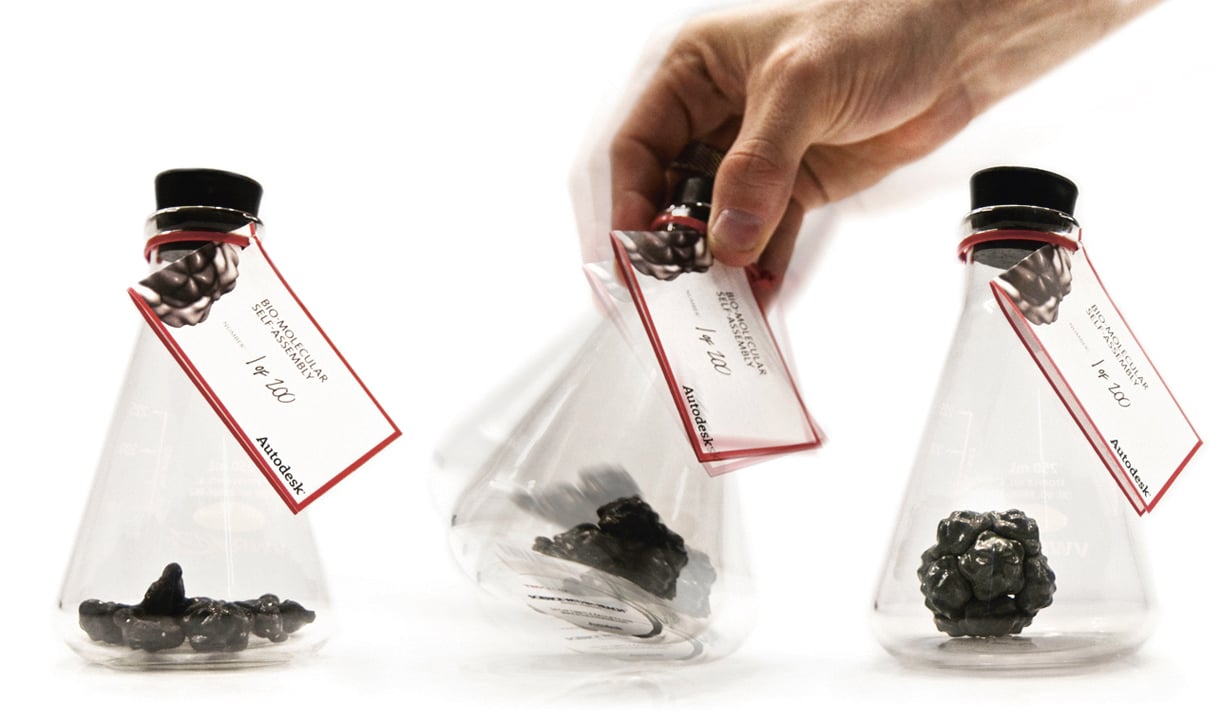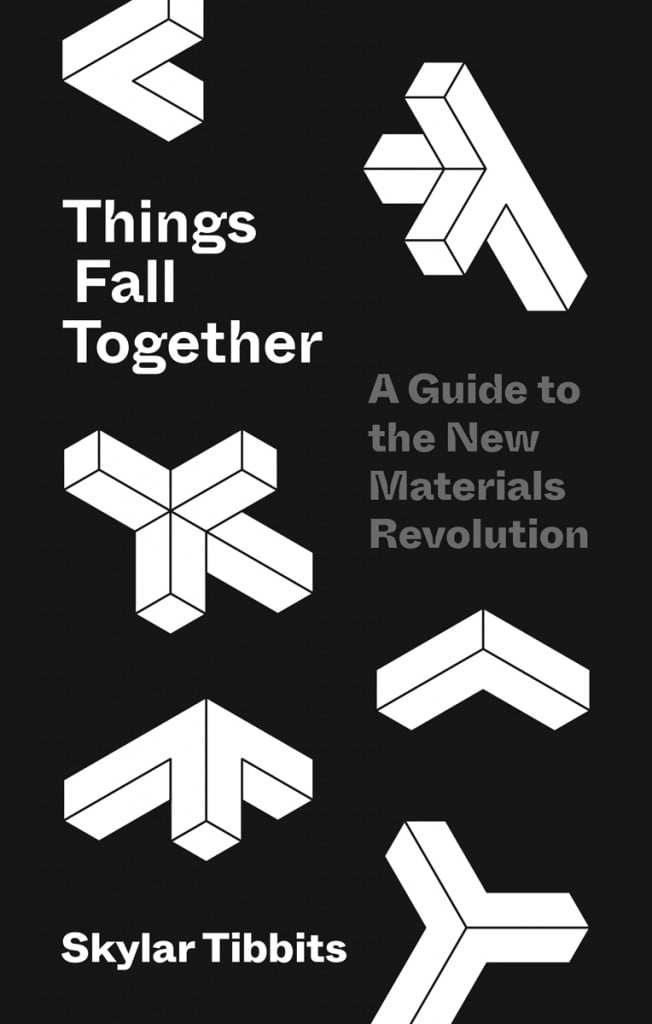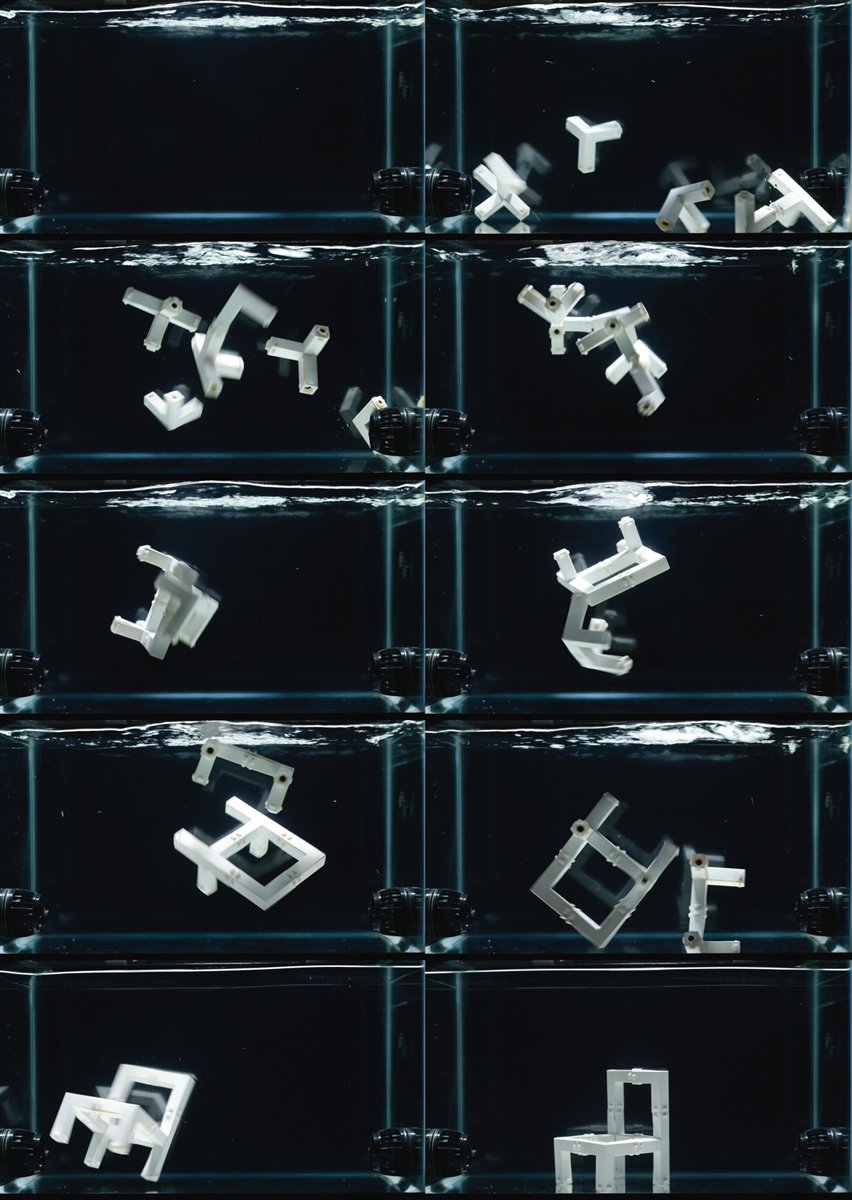
June 3, 2021
Skylar Tibbits Says Materials Science Will Make Our World Less Digital—and More Wondrous
Things Fall Together: A Guide to the New Materials Revolution is the designer and MIT Self-Assembly Lab Director’s latest investigation into how new materials research will impact design.

When we picture what materials, design, and manufacturing of the future will look like, it’s easy to imagine digitally-enabled smart homes filled with data-mining furniture, assembled by sophisticated robots and upholstered in biometric synthetic fabrics. But a new book by Skylar Tibbits, a designer and director of MIT’s Self-Assembly Lab, suggests ongoing developments in materials science are poised to make our world a lot less digital—and much more wondrous. Things Fall Together: A Guide to the New Materials Revolution, forthcoming from Princeton University Press, envisions a not-so-far-off future where flat-packed furniture springs to shape when unboxed, buildings adapt their design to become more efficient over time, shoes and stents mold themselves to the contours of our bodies, and roads built with self-healing concrete repair potholes on their own. It’s a world where materials inspire novel forms and enable entirely new ways of living.

Tibbits proposes a radical shift away from thinking of materials as the passive substances that we humans bend and build into the stuff around us. Instead, he aims to show how they can function as active agents—even collaborators—in the design and manufacturing process. By developing products and structures around materials’ specific properties (such as stiffness, conductivity, or the ability to expand or contract), and ‘programming’ them by factoring in interactions with factors like heat and moisture or the forces of physics, we can activate their full potential to grow, transform, and improve themselves. Tibbits makes the case for a materials-driven approach where form and function are symbiotic, the medium (and not the maker) guides the final design, manufacturing is decentralized, and nothing is intended to serve a single and permanent purpose. This, he contends, is the way to create smarter, simpler, and more sustainable solutions to our most complex problems, from coastal erosion, to waste reduction.
Many of the smart materials and active objects detailed in the book remain within the realm of the laboratory, but it’s the more concrete examples that architects and designers will find most relevant. Innovations like granular jamming (where small particles of gravel form stable structures when packed and contained within a simple string netting) engender promising possibilities for temporary architectures, or for building with limited resources or few skilled workers. Another of Tibbits’ projects embeds geometric forms on the ocean floor that direct currents and redistribute sand deposits to restore coastline in the Maldives, islands drowning with rising sea levels. It’s a minimally invasive and ingenious tactic that, unlike barricades, works with nature, not against it. Tibbits’ Self-Assembly Lab also demonstrates how furniture can be manufactured, not by people or even robots, but by itself. A simplistic chair is constructed when Tetris-like individual members, each implanted with magnetic nodes at juncture points, find one another and connect as they float about within a water tank.

The material future Tibbits presents is a tantalizing one, but he acknowledges that the advancement and adoption of new materials innovation will require a fundamental philosophical shift in the process of design itself. Such ruptures in the way we think about aesthetics, authorship, business, and manufacturing seem impossible to enact, even as we reckon with our industries’ contributions to waste, consumerism, and labor inequities. Nevertheless, books like Things Fall Together should be required reading for students and veteran designers alike. It’s time for these ideas about material intelligence to leave the lab; to commingle among designers, architects, and engineers; and to start finding their way into reality. Not just as conceptual explorations, but as part of the fabric of our everyday lives.
You may also enjoy “5 Technologies Shaping the Future of Design”
Would you like to comment on this article? Send your thoughts to: [email protected]
Register here for Metropolis’s Think Tank Thursdays and hear what leading firms across North America are thinking and working on today.
Recent Viewpoints
Viewpoints
Navigating the Path to Net Zero







